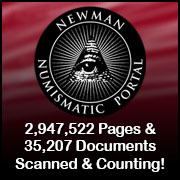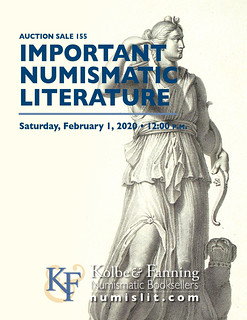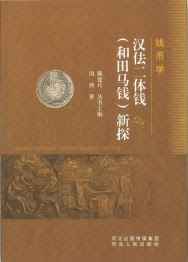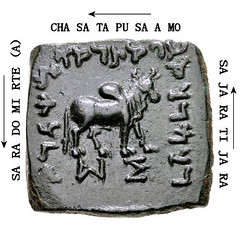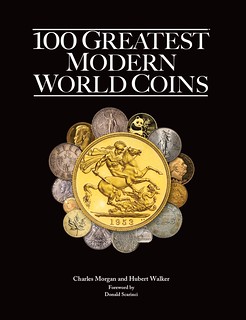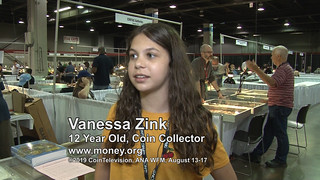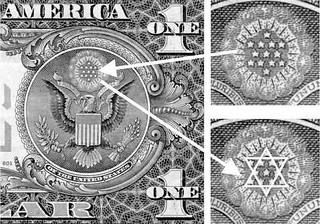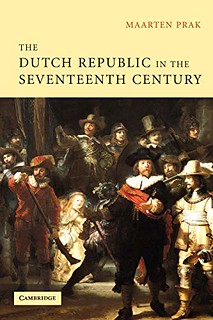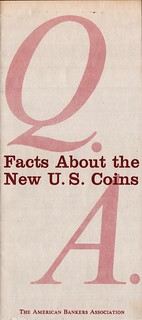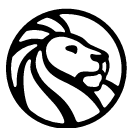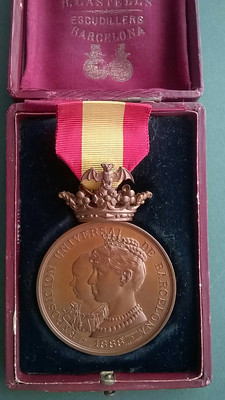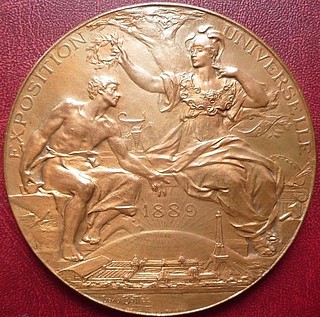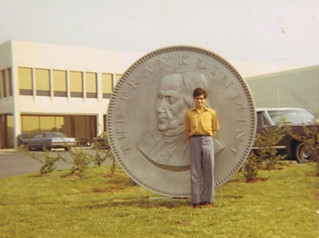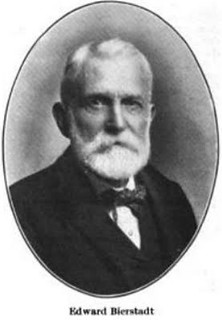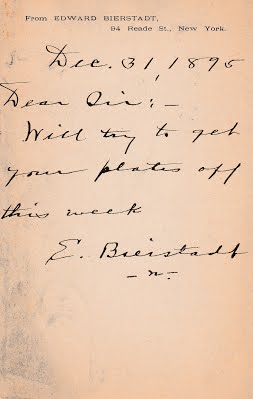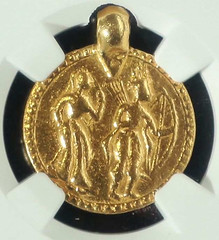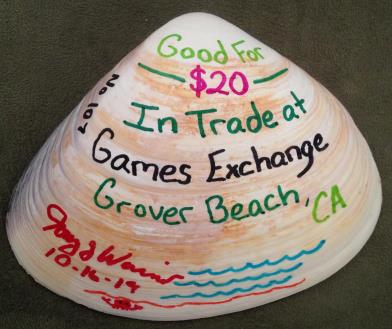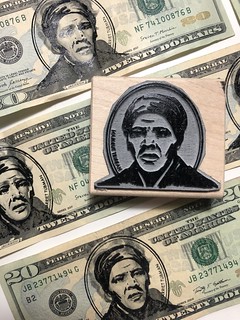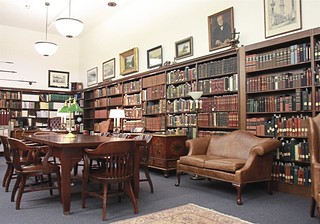
Volume 04, Number 04, January 22, 2020
Click here to read this issue on the web
Click here to access the complete archive To comment or submit articles, reply to whomren@gmail.com Content presented in The E-Sylum is not necessarily researched or independently fact-checked, and views expressed do not necessarily represent those of the Numismatic Bibliomania Society. WAYNE'S WORDS: THE E-SYLUM JANUARY 22, 2020
Other topics this week include symbols on American money, medals in advertising and product packaging, the Franklin Mint, Elvira Clain-Stefanelli, auction results, clam shell money, the ANA Summer Seminar, new Harriet Tubman overstamps, and the $7.5 million dollar coin. To learn more about the 1819 Report of the Committee of the Society of Arts on preventing counterfeiting, a 1847 publication by New Orleans Mint Melter and Refiner John Leonard Riddell, the horse coins of Khotan, the 100 Greatest Modern World Coins, the Boston Numismatic Society, the Chapman Brothers' coin photographer, the Undertaker's Riot medal, curried currency, the 1973 ANA grading conference and China's first female tractor driver, read on. Have a great week, everyone! Wayne Homren
MORE KOLBE & FANNING SALE 155 HIGHLIGHTSKolbe & Fanning's next numismatic literature sale will close February 1, 2020. Here are some more highlights. -Editor MORE HIGHLIGHTS FROM KOLBE & FANNING’S FEBRUARY 1 AUCTION
Some highlights of the sale include: 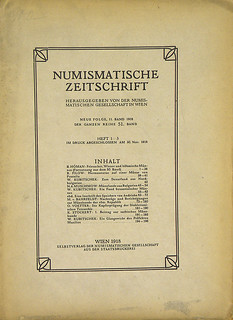 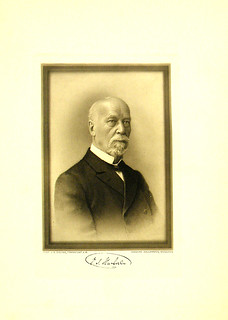
Lots 8 and 53 Lot 8: the final installment of Max von Bahrfeldt’s enormously important work on Roman Republican coins, Nachträge und Berichtigungen zur Münzkunde der römischen Republik Lot 53: the very scarce deluxe edition of the memorial volume published in honor of Ernst Justus Haeberlin, author of the classic work on the aes grave coinage 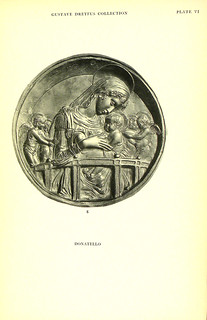 
Lots 163 and 211 Lot 163: an original copy of the massive catalogue of the Gustave Dreyfus collection of reliefs and plaquettes, with 127 superb plates Lot 211: the rare and important 1819 Report of the Committee of the Society of Arts on technological advancements in preventing the counterfeiting of bank notes 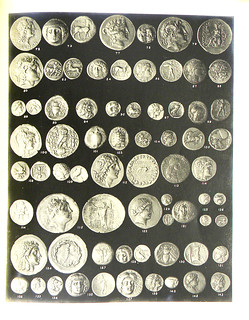 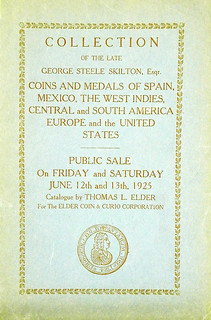
Lots 272 and 293 Lot 272: an original copy of the exceptional John Story Jenks catalogue (Henry Chapman, 1921), with 42 extraordinary photographic plates depicting ancient, medieval and modern coins and medals Lot 293: a very significant collection of 174 different catalogues issued by Thomas L. Elder between 1905 and 1940 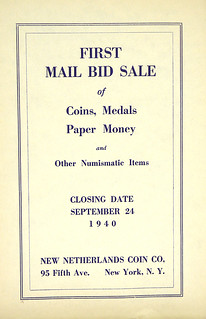 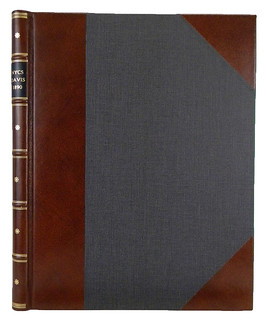
Lots 361 and 364 Lot 361: a complete set of auction catalogues published by the New Netherlands Coin Company between 1940 and 1976 Lot 364: an attractively bound plated copy of the New York Coin & Stamp Company’s 1890 auction catalogue of the Robert Coulton Davis collection 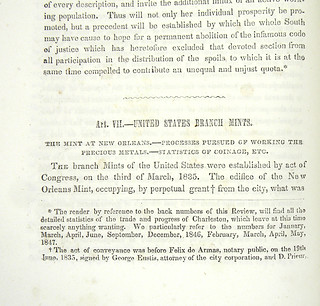 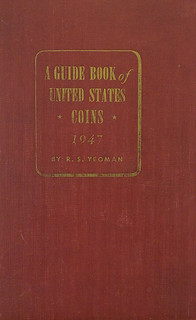
Lots 380 and 420 Lot 380: a generally unknown 1847 publication by John Leonard Riddell, Melter and Refiner at the United States Branch Mint at New Orleans, on the Mint’s operations and processes Lot 420: a complete collection of the first seventy editions of A Guide Book of United States Coins, with the first edition represented by a first printing. Bids may be placed via post, email, fax or phone, as well as online. Kolbe & Fanning use Auction Mobility as our third-party online bidding platform. Auction Mobility is an app-based platform allowing users the ability to participate in the sale through phones, tablets and computers. To register for the sale, bidders must go to bid.numislit.com and sign up. Once you have set up an account, you may browse lots, place advance bids, or participate in the live sale online. Those wishing to participate on their devices can download the Kolbe & Fanning app through the Apple or Google Play Store. The printed catalogue of Sale 155 was mailed to active customers this week. A PDF of the printed catalogue has been posted to our main website at numislit.com for those who prefer that format. Bids placed via post, email, fax or phone must be received by January 31, the day before the sale, in order for them to be processed. Advance absentee bids may also be placed at any time online at bid.numislit.com; live internet bidding will be available during the sale itself through the same platform. Kolbe & Fanning Numismatic Booksellers LLC is a licensed and bonded auction firm in the State of Ohio. For more information, please see the Kolbe & Fanning website at numislit.com or email David Fanning at df@numislit.com. To register for the sale, go to bid.numislit.com. We look forward to your participation. To read the earlier E-Sylum article, see:
NEW BOOK: SINO-KHAROSHTHI COINSIn her Chinese Money Matters blog, Helen Wang, Curator of East Asian Money at The British Museum discussed a new book on Sino-Kharoshthi coins - the horse coins of Khotan. Thanks. I added a Wikipedia image of one of the coins. -Editor
ZHOU Ti 周倜 is a member of the Xinjiang Numismatic Society 新疆钱币学会, but better known for his publications on Chinese calligraphy. Foreword by Huang Zhigang 黄志刚, Director of the Xinjiang Numismatic Museum 新疆钱币博物馆, and Secretary of the Xinjiang Numismatic Society Afterword by ZHANG Xin 张欣, Research student at the Institute of History and Literature, Hebei Normal University Series editor DAI Jianbing 戴建兵 is Professor of Economic History at Hebei Normal University, Shijiazhuang Table of Contents
Illustrations of Sino-Kharoshthi coins (b/w photos of 147 coins from Zhou Ti’s collection) Afterword by ZHANG Xin To read the complete article, see:
To read the Wikipedia article, see:
BOOK REVIEW: 100 GREATEST MODERN WORLD COINSDennis Tucker of Whitman Publishing forwarded this review by Don Scarinci on the new book 100 Greatest Modern World Coins, written by our friends at CoinWeek, Charles Morgan and Hubert Walker. Thanks! -Editor Donald Scarinci on the 100 Greatest Modern World Coins In March 2020 Whitman Publishing will release 100 Greatest Modern World Coins, by numismatists Charles Morgan and Hubert Walker. The 168-page coffee-table hardcover will be available from booksellers and hobby shops nationwide, and online (including at www.Whitman.com). Here, medallic-art historian Donald Scarinci shares his thoughts on modern world coinage and the new book.
Those 100 or so years were a time of great transition in just about every aspect of life. In numismatics, they were a bridge between the classic designs of the great eighteenth- and nineteenth-century engravers, like Pierre-Simon-Benjamin Duvivier and William Wyon, and the contemporary masterpieces of sculptors such as Herbert Wähner and Donald N. Everhart Jr. Strong Demand for Coins and the Technological Changes to Meet that Demand Historically, demand for coins and advances in technology may be the two most significant variables that influenced coin design. As demand for coins in commerce increased in the ancient world, their methods of production improved and the number of mints increased. Demand continued to increase from the seventeenth century forward. Manufacturing methods improved and the demand was met on a widespread scale. Instead of each coin being individually hammered by hand, mechanically operated devices increased the speed and efficiency of production. As the speed of production increased, the need for artists to design the coins expanded. New technology assisted the designers just as it increased the production of coins. A medieval hammered coin looks very different from a coin produced on a screw press or a steam press. All coins made after the invention and widespread use of the Janvier reducing machine look very different from the coins made before. In the nineteenth century the Janvier allowed sculptors to participate in what had theretofore been the province of engravers. The sculptors brought a new eye to coin design and saw coins as three-dimensional objects, like bas relief and sculpture. They could sculpt a 12-inch bas relief, put it on the Janvier, and reduce the sculpture to a 40 mm stackable coin. In the modern era, before credit and debit cards, more people than ever before in the history of the world used coins and paper currency to transact business. Their coins needed to be functional for everyday use. It is no surprise, therefore, that the design trends in the decorative arts—art nouveau, beaux arts, art deco—and not trends such as expressionism, cubism, surrealism, modernism, or post-modernism came to dominate coin and medal design before the 1960s. It can be argued whether the involvement of sculptors in coin design made coins more aesthetically competitive or whether the marketplace demanded more pleasing coin designs and mints responded to the demand. It is certain, however, that while function has driven the weight, size, and shape of the coins of the modern era, sculptors have driven the excellence of coin designs. For Modern Coins, the Art is as Important as the Historical Context Collectors who discover these “bridge” coins that we have labeled “modern” have a unique opportunity to understand the world nation-by-nation. The 1907-S peso from the Philippines makes a statement about that country and its relationship with America, just as the 1938 pattern penny of Ireland teaches something about the sentiment of the Irish people when they changed the inscription from Saorstát Éireann (Irish Free State) to Eire. When we study the coinage of the modern era, we begin to appreciate the importance of the art as much as the subject matter it conveys and the importance of a coin in its historical context. Increasingly, modern coins are studied and appreciated almost more for their art than for their history. With modern coins, numismatists strive to understand the life and work of artists such as Georges Guiraud, who designed the 1950 50 franc, and Giuseppe Romagnoli, who designed the impressive 1928 20 lire. The trend is toward understanding the art of coins and the work of the artists who make them. Beginning in 1982, coin designs and artists were singled out with recognitions like the Krause Coin of the Year Award. At many world mints, the designs on coins are reviewed and approved by committees rather than by individuals, thereby creating a written numismatic record. The advent of computer modeling in the twenty-first century allows artists to translate two-dimensional drawings into three-dimensional coins. Today, graphic artists are replacing sculptors in the same way that sculptors replaced engravers in the 1800s when the Janvier reducing machine was introduced. Fortunately, sculptors are still required in the translation process, but this too will likely change. 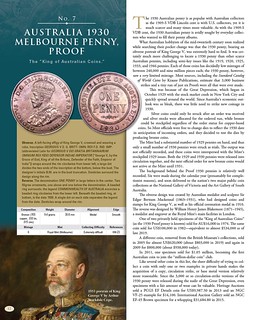 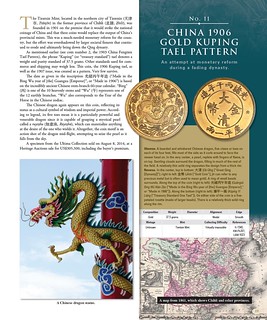 Assembling Your Own Great Coin Collection Morgan and Walker’s 100 Greatest Modern World Coins debunks the notion that coins of the modern era are too common to warrant much of a premium for collecting purposes. However, the emphasis on rarity in this latest “100 Greatest” book should not deter collectors who are interested in the coins of this important period. Coins of the late nineteenth and early twentieth centuries were manufactured in the millions. Accordingly, they are often available quite inexpensively. The challenge with collecting modern coins is not so much the scarcity of the coins, but the scarcity of the condition. The best uncertified modern coins often sell for just a slight premium over their less-pristine siblings. If you can grade properly and develop an interesting collecting plan, your efforts will be rewarded economically as well as by the knowledge you gain from the collecting experience. Authors Charles Morgan and Hubert Walker have created a wonderful study of modern world coinage. They cover the period of 1900 to date (extending the “modern” era to include in their rankings a half dozen significant and well-deserving coins from more recent decades), setting each coin in context and bringing each to life. 100 Greatest Modern World Coins will inspire, inform, and entertain you. Enjoy the journey and let it spark ideas for building your own significant collection. Donald Scarinci is the senior partner in one of the largest law firms in New Jersey. He has collected coins since high school. Scarinci is considered an international authority in the field of contemporary coins and medals, having assembled one of the largest privately held collections of modern and contemporary art medals in the United States. He is a life member of the American Numismatic Association and a fellow of the American Numismatic Society, where he serves as chairman of the J. Sanford Saltus Award Committee for excellence in medallic art. He is also the ranking member (serving since 2005) of the U.S. Treasury Department’s Citizens Coinage Advisory Committee. He has written four books, including Coin of the Year, published in English and Chinese by Krause Publications, where he continues to lend his expertise as one of the ten prime Coin of the Year nominators. 100 Greatest Modern World Coins
To read the earlier E-Sylum article, see:
 BOSTON NUMISMATIC SOCIETY ARCHIVES DIGITIZEDThe latest addition to the Newman Numismatic Portal is the archives of the Boston Numismatic Society. Project Coordinator Len Augsburger provided the following report. -Editor 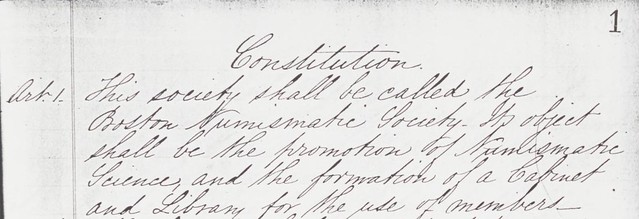 Newman Portal Adds Boston Numismatic Society Archives One of the oldest numismatic societies in the United States, the Boston Numismatic Society (BNS) for many years (1870-1891) published the American Journal of Numismatics and today continues as an active numismatic organization. BNS member Yale Lansky, working with Newman Portal, has facilitated scanning of the Society archives, and these records are now available on Newman Portal. The series consists of eight volumes of Society proceedings (1860-1992), treasury book (1860-1982), and a two-volume history compiled in 1998 by Thomas P. Rockwell. The earliest records contain well-known names including Jeremiah Colburn, Thomas Appleton, Augustine Shurtleff, and others. Appleton reported in the minutes the launch of the Society on February 11, 1860: “Eight gentlemen met by invitation on Saturday, February 11 at the rooms of the N.E. Historic Genealogical Society, 13 Bromfield St. Mr. Jeremiah Colburn occupied the chair….the secretary read a constitution….” As today, exhibits were an important component of meetings, and the Society proceedings carefully record who exhibited what, so that anyone researching these individuals, or their collections, will find this an important source of information. Moreover, the series as a whole documents a formative period of American numismatic history, when collectors began gathering in a formal way in order to create enduring institutions. Some succeeded and some failed, and we are fortunate that BNS has persevered and faithfully preserved an important part of the historical record. Image: Constitution of the Boston Numismatic Society (1860), article one Link to Boston Numismatic Society archives on Newman Portal:
What a fantastic addition for NNP! I put out a call here in The E-Sylum a little over four years ago. This has been a long time coming, but well worth the wait. This archive will inform numismatic scholarship for many years to come. -Editor The Newman Numismatic Portal is actively looking for opportunities to digitize content from the archives of numismatic organizations. Already available are archives of the Western Pennsylvania Numismatic Society and the Rochester Numismatic Association, With the new scanning facility in place at the American Numismatic Associations, the ANS archives will be digitized in the coming months and years. If your club has an archive, NNP will digitize some or all of it free of charge. High on our list are the early archives of the Boston Numismatic Society. Do they exist? To read the earlier E-Sylum article, see:
VIDEO: YOUNG NUMISMATIST VANESSA ZINKThese are selections from the David Lisot Video Library that feature news and personalities from the world of coin collecting. David has been attending coin conventions since
1972 and began videotaping in 1985. The Newman Numismatic Portal now lists all David’s videos on their website at:
Here's one on young numismatist Vanessa Zink. -Editor An excerpt of the video is available for viewing on the Coin Television YouTube Channel at:
Vanessa Zink, 12 year Old Coin Collector, David Lisot, Interviewer, CoinTelevision.com. Vanessa Zink started collecting at five years old because of her father. Now at twelve she has developed a real appreciation for the numismatic hobby. Hear her share how this has happened. MORE ON SYMBOLS ON AMERICAN MONEYGarrett Ziss submitted these notes on the Wilmington (DE) Coin Show and symbols on American money. Thanks. -Editor
The reverse of the $1 FRN contains a representation of the Great Seal of the United States. While putting this presentation together last weekend, I came across a story online about how the 6-pointed star (Star of David) configuration of the stars above the eagle on the obverse of the Great Seal of the United States was personally requested by George Washington as a tribute to Polish-born Jew, Hayim Solomon, for his financial support of the Continental Army. When I searched for more information on this topic, I found a 2012 E-Sylum post and corresponding links, which explained that there is no documentation to back up this story. I changed my Wilmington presentation to reflect this fact, so thanks to The E-Sylum for saving me from giving out false information on Saturday! (While his connection to the Great Seal is a legend, Hayim Solomon was indeed an indispensable supporter of the Continental Army and an unsung hero of the Revolutionary War.) Coincidentally, last weeks’ E-Sylum also had a tie-in to the Great Seal of the U.S. and the $1 FRN, included in a post by Pablo Hoffman. My Wilmington presentation contained most of the information in Mr. Goldsmith’s 1957 pamphlet, although I also mentioned the select gold coinage from 1796-1807 that displayed the eagle holding arrows in his right claw. [There is a slight inconsistency in Mr. Goldsmith’s pamphlet, as the first Draped Bust Heraldic Eagle silver coins were dated 1798 (dime and dollar)]. To show the kids at the Wilmington program the difference between the Draped Bust Heraldic Eagle and Capped Bust reverses, I blew up images of them both and affixed them to poster board (similar to your addition of the reverses of 1807 Draped Bust and Capped Bust half dollars to the E-Sylum post). After this, I also asked them to look at the reverse of a Kennedy half dollar to determine which claw holds the arrows on more modern coins. Regarding the question in last weeks’ E-Sylum on where further info can be found on the topic of the arrows and eagle talons, the first source that came to mind was a John Reich Journal article entitled “Kitchen Wisdom and the American Heraldic Eagle as a Symbol of War and Peace” written by Jim Matthews and his wife, Dr. Gabriela Luschei (found here: https://archive.org/details/johnreichjournal21n3john/page/28). I'm glad The E-Sylum and Newman Numismatic Portal archives were useful. Thanks for the link to the "Kitchen Wisdom" article! -Editor To read the earlier E-Sylum articles, see:
QUERY: 1696 UNDERTAKERS’ RIOT MEDAL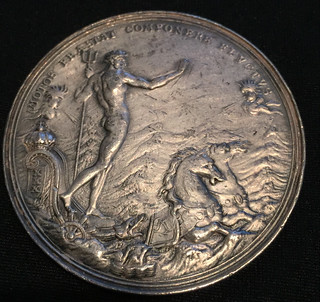 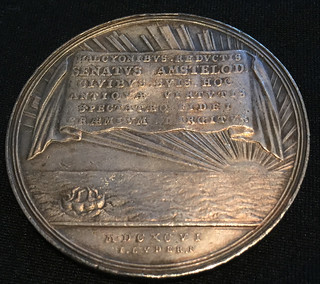 Web site visitor Robin Gadda writes:
When I researched the medal I found it in the book titled "The Dutch Republic 17th Century-the Golden Age", on page 155. It offers some interesting history of the medal, as it was given to civic militiamen to celebrate the end of the Undertakers riots of 1696. Would you be kind enough to direct me to where I might find its value? I did attend a coin show locally, but they were not able to help. Thank you for your time. It's nice to hear from people who find our article archive online and can add some more information. To return the favor I asked the author of the earlier article, medal dealer and cataloger Jeremy Bostwick of Numismagram, for a market estimate of Robin's medal. -Editor Jeremy writes: "This interesting type comes in a few different sizes (~40mm, ~50mm, & ~60mm), and by a few different engravers all following the same overall design but varying ever so slightly in style. Though size isn't mentioned, this one would appear to be the largest of the three sizes and by Luder (his name appearing below the roman numeral date on the reverse). Values can be all over the place given the variety of sizes and the conditions in which they can be found, ranging from $100-150 for more common ones with some handling and marks to as much as $1,000 or more for lesser seen ones in conditions approaching Mint State. This one is likely in the middle of those two extremes—being one of the more difficult to encounter but also displaying some scattered marks and light handling." To read the earlier E-Sylum article, see:
 KATE EVANS 1912 SUFFRAGETTE HUNGER STRIKE MEDALKatie de Silva passed along a numismatic item from a century-ago women's movement. Thanks! -Editor Katie writes: This is cool. I read about it in Art Daily in an article about Welsh suffragist Kate Williams Evans, and a collection recently acquired by the Museum of Wales. 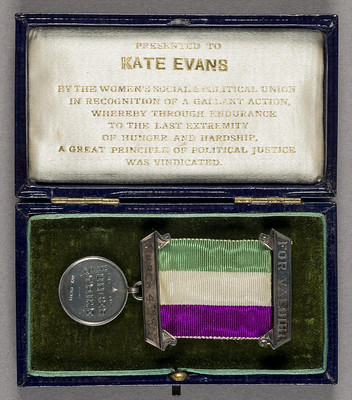 The items which form part of the collection owned by Welsh suffragette Kate Williams Evans were acquired by Amgueddfa Cymru – National Museum Wales in 2018. These include a hunger strike medal and book signed by prominent suffragettes including Emmeline Pankhurst and Emily Wilding Davison. Born in Llansanffraid in 1866, Kate Williams Evans travelled to Paris as a young woman, where she developed a keen interest in politics. On returning to Wales, she joined the Women’s Social and Political Union and became a suffragette. She was arrested in 1912 for ‘malicious damage’ and her Metropolitan Police summons forms part of the collection. Hunger-striking women were routinely restrained and force-fed by prison authorities. The collection acquired by Amgueddfa Cymru includes a rare Suffragette Hunger Strike Medal, given to Kate as an acknowledgement of the treatment she received in prison. To read the complete article, see:
To read the complete museum record, see:
On Saturday, the 2020 Women's March took place. I'm not sure if there are any numismatic items such as commemorative coins, medals or tokens. Below are a plain pin and nice graphic button I saw on the web site. -Editor 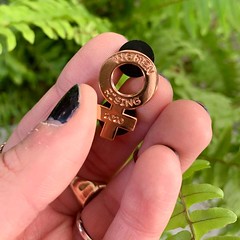 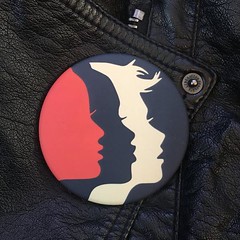 For Women's March swag, see:
To read earlier E-Sylum articles, see:
NOTES FROM E-SYLUM READERS: JANUARY 19, 2020American Bankers Association Pamphlet on NNP
To read the complete pamphlet on NNP, see:
To read the earlier E-Sylum article, see:
Sage's Candy Coin Stamped on Trade Dollar
Some years ago in our office we had three of the five known 1885 trade dollars. One was part of a complete set of trade dollars I had formed (a set of Proofs 1873 to 1885), a set of circulation strikes 1873 to 1878, and a set of circulation strikes with Chinese chopmarks 1873 to 1878. The 1878-CC chopmark was the hardest to find. SAGE’S CANDY COIN counterstamp on a trade dollar is another interesting item; an estimated 7 or so are known. 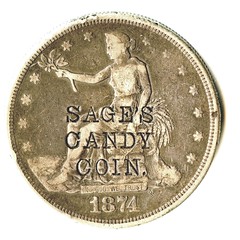 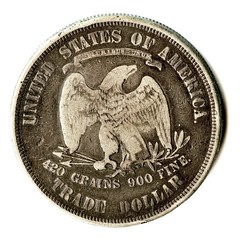 Thanks. Interesting item. -Editor To read the earlier E-Sylum article, see:
Query: James Skalbe Information Sought
I am wondering if you know anything about Boston coin dealer James Skalbe. I may have missed the news in The E-Sylum, but I saw a mention in an eBay listing for one of his counterstamped coins that he had passed away in 2018. I scoured the internet but found nothing other than a legal notice for his trust, and I wrote to his family at his last known address but got no reply. I know him from his "J. E. SKALBE / NUMISMATIST / BOSTON" counterstamps but of course he was also a noted Boston coin dealer and active in certain coin clubs and organizations. I am curious to know if the numismatic community has any details on his passing. Can anyone help? I believe our last mention of Skalbe was in my Numismatic Diary January 22, 2017. Steve Bishop displayed one of Skalbe's counterstamped coins. -Editor 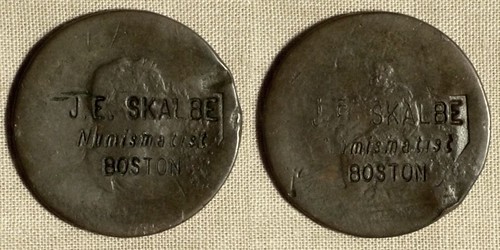 To read the earlier E-Sylum articles, see:
Curried Currency
If Brazil's baggage declaration forms are anything to go by, the dogs should have better luck there than in many other countries! There is a section headed "4. CURRIED CURRENCY", in which there are also several typos in the explanatory text. By the way, the question there relates to 10,000 reais, which on 28-Nov-2019 was the equivalent of US$2345 although in February 1995 it reached a peak of nearly $11,900. I have to admit I've never had anything to do with curried currency, nor baked, roasted, grilled, stewed or fried - only pickled!  Funny. Thanks! -Editor To read the complete Accompanied Baggage Declaration form, see:
Not so funny is this Washington Post article about how the Drug Enforcement Administration seized a man's $82,373 life savings from his daughter at the Pittsburgh airport. The family filed a lawsuit in federal court in Pennsylvania. -Editor To read the complete article. see:
To read the earlier E-Sylum article, see:
The Viking Uffda Where's George Overstamp
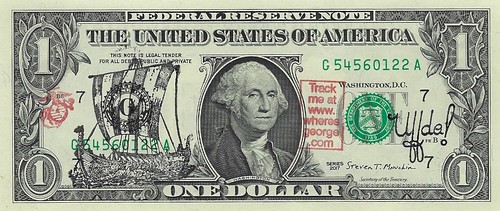 O. T. Thompson writes: "I love it when you show Georgies in The E-Sylum. Attached is an example of one I've been entering into circulation since 1998. "The Viking ship was used to honor the 500th Anniversary of the Viking's discovery of America in 2000. The Eagle, globe and anchor was used to represent my USMC service from 1967-1971. The 'UFFDA' is Minnesota-speak used by the many people of Norwegian descent who live there or those of us who moved from there and still use the word, even on our automobile license plates. "The way it was defined to me as a child was...'Uff' is a Norwegian word where the English word 'hoof' came from many moons ago. When someone asked a Norwegian farmer how many 'uffs' he had, it referred to sheep, goats, horses, cattle or bulls...any farm animal with hooves. 'Da' is something you step in while walking across a cow pasture. If you combine DA (What you step in.) with UFF (A bull for example.) you get BS. "The modern version is more refined." Thanks. Great story. Apparently it's not uffda - Wikipedia agrees. -Editor To read the Wikipedia article, see:
To read the earlier E-Sylum article, see:
The Micromosaic Passion Coins
I don't have the Vermeer coin yet as only a very small number were released around Christmas, and most of the mintage is supposed to be available later this month, including my coin. They must be seen in hand to see things like the relief created by the placement of the tiles (such as on Mona's famous nose). These coins are the fruit of a collaboration between three European companies (Powercoin, Coin Invest Trust and B. H. Mayer) and staff with backgrounds in many areas besides minting. 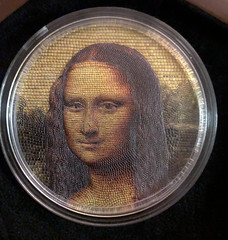 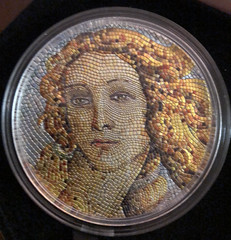
Mona Lisa and Birth of Venus micromosaic coins (images courtesy Lou Golin) Thanks for the images! Great series. I'll look forward to seeing one in person someday. -Editor To read the earlier E-Sylum article, see:
J.D Salinger as a Collector
For more information on the exhibit, see:
MORE ON MEDALS IN ADVERTISINGRegarding medals used in product packaging and advertising, Paul Horner writes: I found a little more info these medals after I sent it to you: The name of the awardee on the medal on the spaghetti box is not "Columbia Macaroni Company" but looks
like Worchester Cereal Company (?). I believe each medal was made with the individual winners name on it. 1st place medals may have been gilt. I'm sure other readers are much
better informed on these medals than I. Here is an interesting site that shows most / all the Columbian Exposition medals:
Harry Waterson writes: I recently bought a small Hoover Electric Cleaner bronze medal and it came with a small 3½x2½ inch fold-out promotional piece for The Hoover Company. It was probably printed in 1932 at the time of the Hoover Silver Jubilee. When I opened up the fold-out it listed the 26 awards the Hoover Co. received from 1914 to 1931 and featured a montage of most of the medals it had garnered. I can find bits and pieces of 24 different medals. A nice piece of ephemera. 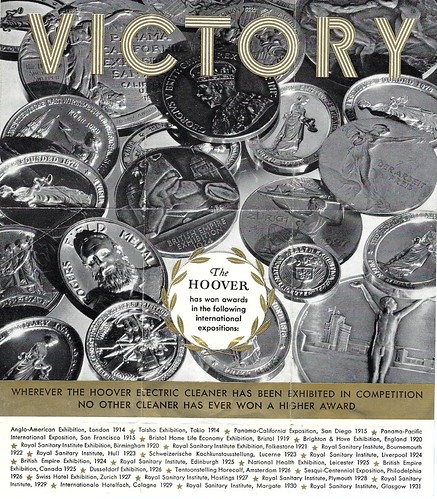 Patrick McMahon of the Museum of Fine Arts, Boston submitted these notes and images. -Editor In response to Paul Horner and Ken Traub's contributions I want to confess that I gravitate towards old award medals in advertising too--on old and new products. Stuffed
away somewhere, I also have a flattened Columbia Pasta box. Mine's for large pasta shells that I used to see in Pace's market in the North End of Boston (they are in the
West End now and probably still carry it--Columbia Pasta is still around:
On Paul Horner’s observation that the name on the medal doesn’t match the company name on his box — perhaps the Worchester Cereal Company changed their name to Columbia after they won the medal at the Columbian expo? 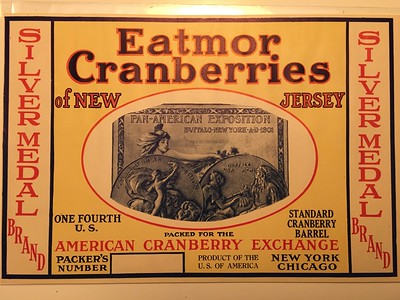 Along similar lines, here's an out of service, Eatmor Cranberries crate-label boasting of a silver medal at the 1901 Pan-American Expo. 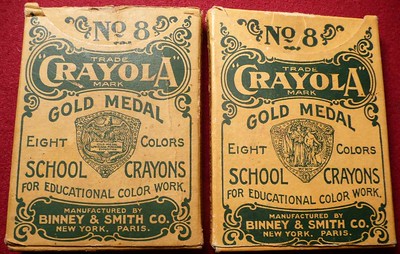 Another favorite for me is the post-1904/pre-1940(?) range of Crayola Crayon boxes with the Louisiana Purchase Exposition gold medal by Adolph Weinman on the box. I have long
thought it notable that with all the folklore purporting that the 1916 quarter was censored to cover Liberty’s bust, this image appeared on children’s crayon boxes for something
like forty years!
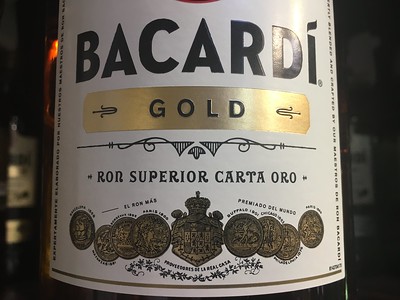 But the one that probably get the biggest kick out of and that anyone can find today is the standard Bacardí Gold ?label. It sports an impressive line-up of medals (from left to right):
2) The 1881 Matanzas (Cuba), Exposition medal of award which I know little about but have seen as attributed to the engraver Pablo Vidal and issued by Feu Hermanos (the obverse
is shown). Here's a link to one in a recent Heritage sale:
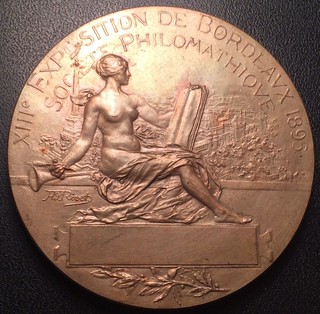 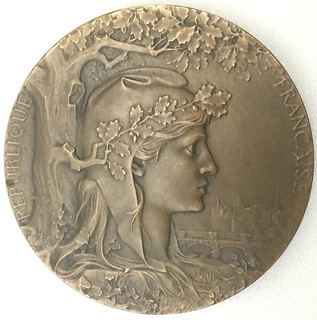
Medals 3 and 4 3) The 1895 Bordeaux, Societé Philomathique XIIIth Exposition medal of award by Adolphe Rivet and struck at the Paris Mint but issued by "Le Medaillier" M.G. LAGARDE in Paris--the one I have came with the original paper note identifying the firm and offering prices for the different metals, inscriptions, reproductions, etc... [ebay images attached] 4) The 1900 Paris, Universal Exposition medal of award by Jules Chaplain (obverse shown) weblink:
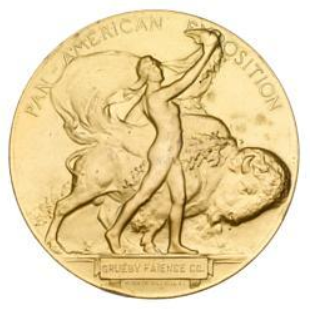 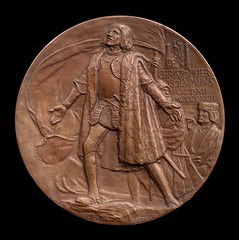
Medals 5 and 6 5) The 1901 Buffalo, Pan-American Exposition medal of award by Hermon MacNeil (reverse shown) Here's a link to the MFA's example:
6) The 1893 Chicago, Columbian Exposition medal by Saint Gaudens and Charles Barber (Saint Gaudens' obverse shown) Here's a link to the MFA's example:
7) The 1876 Philadelphia International (U.S. Centennial) Exposition commemorative/medal of award by Henry Mitchell (obverse shown). weblink:
This Bacardí 8 is not to be confused with a bottle of Bacardí 8... or Pieces of 8... I'm trying to collect the "Full Bacardí" and I'm up to 5 of the 8. I'm missing the Buffalo Pan-Am (the most expensive of these in any metal), the Matanzas (the hardest to find in really good condition), and the Philadelphia (the cheapest and most common in several forms... so I'm patient). For this unsolicited shout-out to Bacardí, let's invite them to make a charitable contribution to the NBS or the Newman Numismatic Portal where it will be archived and accessible to rum and medal fans whenever they search the web! (not to mention Columbia Pasta and Crayola) Thanks, everyone - very nice. -Editor To read the earlier E-Sylum articles, see:
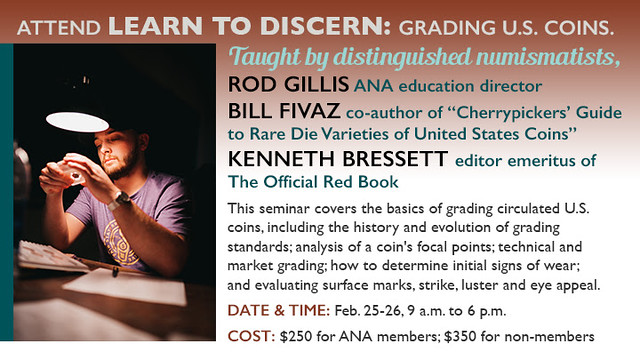 SELLING MEDALS OF HONOR OVERSEASJeffrey Zarit writes: In the past few weeks there has been some discussion about medals of honor. It is my understanding that they neither be bought or sold. That being said, I just received Künker's (Germany) latest catalog and the last lot of the first catalog, lot 1077 is a Medal of Honor awarded to a Air Force General for his actions in World War II. I do not know who to contact about this but feel very strongly that anyone who puts his life at risk and receives a Medal of Honor should not be able (even if the awardee is deceased) to sell this. Gayle Alvarez of the Medal of Honor Historical Society, US writes: It is against the law in the US to sell Medals of Honor. As such, many times the seller goes overseas to do the so deed. I checked the Künker web site, and the lot has been withdrawn. Here's the auction lot description, which is still online. Great medal! -Editor 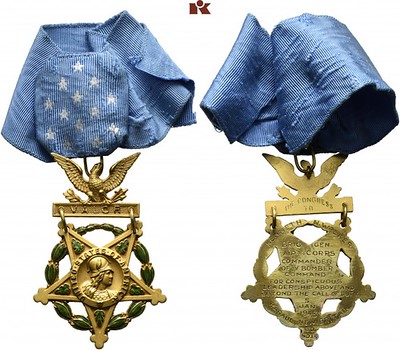 Lot was withdrawn Congressional Medal of Honor for the Army [Army Congressional Medal of Honor] (awarded posthumously!). 5. Model (1943-1964), gold, partially enamelled, on the lapel award engraving "THE CONGRESS / TO" "KENNETH N.WALKER / BRIG GEN. / AIR CORPS / COMMANDER / OF V BOMBER / COMMAND / FOR CONSPICIOUS / LEADERSHIP ABOVE AND / BEYOND THE CALL OF DUTY / 5 / JAN. / 1943 / RABAUL, NEW BRITAIN / GO / NO.13 "on the laterally cut off collar. Of great rarity. II- Copy from our 235th auction on June 21, 2013, cat.-no. 9,121th Kenneth Newton Walker was born in Los Cerillos, New Mexico, in the United States on July 17, 1898 and joined the US Army in 1917, shortly after the United States entered World War I. In 1929, he completed his flight training in the Tactical School of the US Air Corps. After the outbreak of World War II, he was promoted to brigade general and commanded to the southwestern Pacific as commanding general of the Fifth Bomber Command of the Fifth U.S. Air Force. As commanding general, Walker himself flew aerial operations over the Japanese-occupied New Guinea. On January 5, 1943, Walker was shot down and killed at the age of 44 during a daytime attack on Rabaul / Papua New Guinea. To date, neither his body nor his plane has been found. With GO No. 13 of 11 March 1943, American President Franklin D. Roosevelt (1882-1945) personally conferred the Congressional Medal of Honor posthumously on Walker at the White House. The reason for the award is as follows: "For conspicious leadership above and beyond the call of duty involving personal valor and intrepidity at an extreme hazard to life. As commander of the V Bomber Command during the period from 5 September 1942, to 5 January 1943, Brigadier General Walker repeatedly accompanied his units on bombing missions deep into enemy-held territory. From the lessons personally gained under combat conditions, he developed a highly efficient technique for bombing when opposed by enemy fighter airplanes and by antiaircraft fire. On 5 January 1943, in the face of extremely heavy antiaircraft fire and determined opposition by enemy fighters, he led an effective daylight bombing attack against the shipping in the harbor at Rabaul, New Britain, which resulted in direct hits on 9 enemy vessels.During this action his airplane was disabled and forced down by the attack of an overwhelming number of enemy fighters. " On December 7, 2001, a gravestone was built in the Arlington National Cemetery in Virginia to commemorate Walker. In addition to the Medal of Honor of the Congress, he was awarded the Army Distinguished Service Cross, the Silver Star, the Legionnaire's Decoration of the Legion of Merit and the Purple Heart. In 1948, the Roswell Army Air Field in Roswell, New Mexico was renamed Walker Air Force Base in his honor. The base was deactivated in 1965 and closed in 1967. Walker Hall at Maxwell Air Force Base in Montgomery, Alabama was also named after him. To read the complete lot description, see:
RAY HERZ AND THE FRANKLIN MINTRay Herz of Jacksonville, FL submitted this story of his personal connection with the Franklin Mint. -Editor Personal Perspective on the Franklin Mint
I’d like to put in my personal view of the Franklin Mint as a very early collector and charter member of the FM Collector’s Society. Many of the recent write-ups failed to mention that Ex-US Mint Chief Sculptor-Engraver Gilroy Roberts Partnered with Joe Segel to co-found the Mint. Roberts retired from the US mint very shortly after the release of the Kennedy Half Dollar. As co-founder and Chief Sculptor he could hire the artistic talent, choose whatever topics he wanted to create (without government restrictions), and assign artists to projects he didn’t want a hand in. 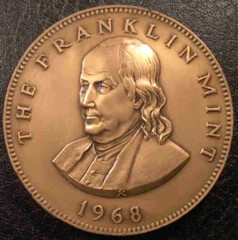 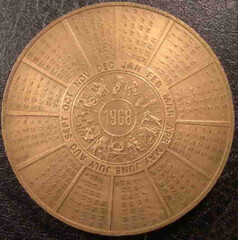 My first contact with the Franklin Mint was in the fall of 1967, when I was 13, and I purchased the 3 inch 1968 Calendar Medal. This was my first medal and was like nothing else I had ever seen. The obverse featured Robert’s famous FM logo of Ben Franklin. The huge medal was only $4.00. I had a newspaper route at the time and this was about the price of 15 comic books. The comic books wouldn’t last forever but the medal has and I still have it. I never bought a lot from them, the occasional medal and annual coin set. The 1972 Bahama Proof Set still stands out as one of the most beautiful sets of all time. FM’s quality was 15-20 years ahead of the US or Canadian mints. They even pioneered a micro-coating in the 1970’s that protected proof coins and medals from toning. In 1970 I became a charter member of the FM Collector’s Society. I loved the membership card with the 1 inch gilt silver logo medal. A later treat from the FMCS was the 1971 Apollo 14 mini coin with a little silver that had flown in the Command Module.
The Franklin Mint, under Gilroy Roberts did some bold experimentation in the early years but by the late 1970’s I realized that they would not live up to their potential. Still, for me, since I only bought items occasionally, I never felt that I was burned and I still have fond memories of a great day. To read the earlier E-Sylum articles, see:
VOCABULARY TERM: RELIEFDick Johnson submitted this entry from his Encyclopedia of Coin and Medal Terminology. Thanks. -Editor Relief. The three-dimensional surface that is the design on a plane other than that of a base, background or field. Relief sculpture has three dimensions, height and width are normal, but the third dimension – depth – is highly compressed. The viewer is not generally aware of the background, which is well behind, near the same, or in front of, the relief design. But what the viewer sees is the modulated relief that forms the design. The background – called matrix by sculptors, the table by manufacturers, and the field by numismatists – is always attached to the relief. If the three-dimensional design is not attached to such a background then it is free standing or sculpture-in-the round. (Because of this attachment to the background and its depth compression, relief is whimsically called "two-and-a-half dimensions.") For numismatic items relief is the design surface that rises above (infrequently below) the table or field of the model, coin or medal. The sculptural modeling of bas-relief – low relief or very low relief – that is capable of making such models required for coin and medal dies is employed extensively. Types of relief. Relief is distinguished by the degree it extends above the background; also there are two categories where the relief is below the background, all explained below. But there is one concept that is very important among these categories – undercut, undercutting – the carving of overhang between the relief and its matrix. • High Relief (Italian alto-rilievo) extends the greatest amount above the background – more than half – and contains a great deal of undercutting to make the relief stand out extensively from the background. It has no application to medallic or numismatic art. [Caution: some medals are claimed to have “high relief” this is not this sculptural definition of high relief; see below.] • Medium Relief or half relief (Italian mezzo-rilievo) is similar to high relief, but does not extend as much away from the background. Again undercutting is present, from moderate to extensive amount. Impossible for diestruck pieces, it can be molded or cast. A few cast plaques with this relief are found in medallic art. • Low Relief or bas-relief (Italian basso-rilievo). No part detached from the background and no undercutting. Bas-relief, the French word for this relief, is used extensively for medallic work, particularly for multiple-struck medals; there are no undercuts which allows for a piece to be cast or diestruck and easily removed from the mold or die. There are sides to the relief where the designs meet the background, the more perpendicular the sides the greater the emphasis of the height of the relief. But all sides must slant with a slight draft or bevel for the piece to be released from its die or mold). Thus for medallic work this relief must meet some severe technical restrictions. • Very Low Relief or coin relief (Italian stiacciato). Absolutely no undercutting, height of relief the very least. Most suitable for coin modeling, and ideal for diestruck high speed coining. However the technical restrictions are even more severe: no sides to the relief (it must end right at the truncation with the background), the total rise of modulated relief to the high point is critical (it must not rise above a certain height), there should be no sharp increase of relief, and no deep protrusions of small areas (like the center of letters, A and O for example). This type of relief is so important to the numismatic field, it has a separate entry in this encyclopedia. See stiacciato. • Hollow Relief or coelanaglyptic relief (Italian cavo-rilievo). This is raised relief in a sunken panel, the height of the relief does not exceed that of the background or table; also called sunken relief. • Intaglio or incuse relief (Italian intaglio rilievo). Negative relief, completely sunken below the background or table; also called sunken relief, it is the opposite of cameo or raised relief. Relief in medallic art. In his book on the medals of the Pinches firm, John Harvey Pinches grouped all the firm's medallic work into five classes of relief: coin, shallow, bold, high and very high; with high relief being most prevalent. Obviously medallic high relief is not the same as sculptural high relief (with extensive undercutting and more than half the form extending from the matrix or background). Thus medallic relief is measured with a different yardstick while using the same terms. All medallic relief falls within sculptural low relief (bas-relief) or lower –coin relief (stiacciato) or incuse or hollow relief. Encountering sales literature extolling the delight of a medal's “high relief” (often written by someone with little experience in either sculpture or numismatics) may confuse the reader. It may talk about one but explain the other. Medallic high relief should be considered as high low relief – the highest relief found in low relief class – a sort of sub-category. Likewise bold medallic relief is a further grade down within the low relief class; shallow is a grade down more so. Coin relief is coin relief in both scales – it can only mean the relief to produce coin models with extensive restrictions. How relief is formed and shaped. Relief can be modelled in soft material, as clay, wax or plasteline; or it can be carved – in plaster, wood, stone or such – or infrequently relief can be formed by hammering thin sheets of metal from the back (repoussé). Further, by plaster casting, relief can be transferred from positive to negative, or negative to positive. Thus to form raised relief the artist may carve in the negative or add material (clay, plasteline) to the positive. Conversely to form incuse relief the artist may carve in the positive or add material to the negative. He can work whichever way he is most comfortable. See modeling. Much of what the sculptor does is creating undulating or modulated relief – the rise and fall of design. If all relief was of one plane raised from the background (silhouette relief), it would look too mechanical and not at all be realistic. Machines can, indeed, cut relief in this style, but it is for an artist to prepare a design in modulated, soft flowing relief that is most attractive to the human eye. Effect of light and shadows. The purpose of all relief is to create an interplay of light and shadows in the sight of the viewer. Thus, higher relief can do this easier than low relief, but each type of relief has a charm of its own. Knowledgeable artists realized this, of course, and make use of all relief for its interpretation by the human eye. Also when creating the models, the material is usually of monochrome color (as all white plaster, all gray clay or such). The artist tilts his model often to catch the different effect and mood created by the shadows. The position of his light source (lamp, window, sun) is important during modeling, the reason so many artists prefer a north light in which to work. Creating the modulated relief is controlling somewhat the shadows of the piece; this is important for the artist as it is for the viewer, or as it is for the photographer of the piece. Scope of relief. It must be remembered that the relief models for coins and medals are quite small. Relief can range from the medalet to the monumental. Mount Rushmore can be considered a relief carving and its creator, Gutzon Borglum, also crafted the patterns for coins and medals. Once the artist reaches a level of proficiency in relief sculpture, the scope can vary. This is evident in other relief objects created by the coin and medal artists as well. These same artists have also produced tablets, architectural reliefs, bronze doors, and medalist John Flanagan even created the relief decoration for the clock in the Library of Congress. Cataloging relief. In cataloging coins the type of relief – unless it is sunken or incised relief – need not be mentioned, as all coins are in very low relief or stiacciato. Medals, however, can be in any of the reliefs described above. A medium relief is considered normal – all others should be identified in cataloging. Looking for the meaning of a numismatic word, or the description of a term? Try the Newman Numismatic Portal's Numismatic Dictionary at: https://nnp.wustl.edu/library/dictionary Or if you would like a printed copy of the complete Encyclopedia, it is available. There are 1,854 terms, on 678 pages, in The Encyclopedia of Coin and Medal Technology. Even running two a week would require more than 19 years to publish them all. If you would like an advance draft of this vital reference work it may be obtained from the author for your check of $50 sent postpaid. Dick Johnson, 139 Thompson Drive, Torrington, CT 06790. EDWARD BIERSTADT (1824-1906)John Lupia submitted the following information from the online draft of his book of numismatic biographies for this week's installment of his series.
Thanks! As always, this is an excerpt with the full article and bibliography available online. This week's subject is early coin photographer Edward Bierstadt. -Editor
Edward and his older brother Charles Bierstadt (1819-1903), operated a photograph business inventing new techniques and devices as early American pioneers in photography. In 1859, he and his brother Charles opened an art studio at 39 Purchase Street, New Bedford, Massachusetts. In 1870, he moved to New York working in their photograph studio at 545 Broadway producing their Albertypes. In 1877, he opened a new studio on Reade Street, which later on was renumbered from 58 & 60 to 94, where he remained for 29 years selling paintings, engravings and stereoscopic images stamped with their company name "Bierstadt Brothers" and the Photo-Plate Printing Company, which was later on renamed the Artotype Printing Company. Albert rented a painting studio in the Tenth Street Studio Building. In 1876, for the U. S. Centennial, he patented a new stereoscope. In 1880, he developed a process to make color photographs but the process took several days. 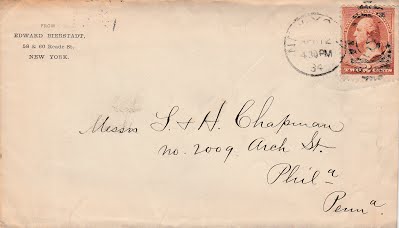 Edward Bierstadt, 58 & 60 Reade Street, New York City, New York, correspondence with the Chapman Brothers regarding photographic plates, postmarked April 12, 1884. Note the handwriting appears distinctively different from his hand below in 1895/1896 and is probably that of his wife Adeline. He and Theo De Vinne invented a mechanical overlays for halftones. In 1894, he developed a new process for color photographs from life that took only 10 minutes.
[AT RIGHT] Edward Bierstadt correspondence with the Chapman Brothers informing them he will send them their plates sometime first week of January 1896. Courtesy Lupia Numismatic Library, Special Collection, The Chapman Family Correspondence Archive. He died on June 15, 1906. He is buried at Woodlawn Cemetery, Bronx, New York. To read the complete article, see:
 ELVIRA CLAIN-STEFANELLI AT THE SMITHSONIANThe Smithsonian tweeted out these photos of National Numismatic Collection curator Elvira Clain-Stefanelli. Thanks to Anne Bentley for passing this along. Anyone recognize the other people in the photo? -Editor 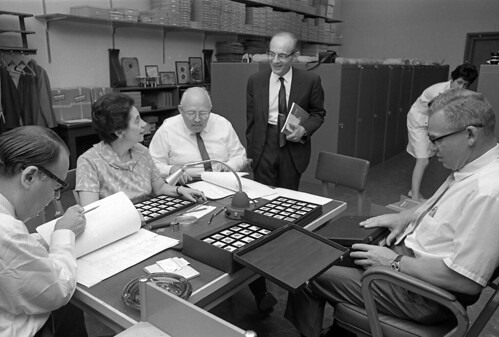 "Elvira Clain-Stefanelli first arrived at the Smithsonian in 1957 as an assistant to her husband, who was curator of @amhistorymuseum’s National Numismatic Collection. By 1984, she was the department’s first executive director. " 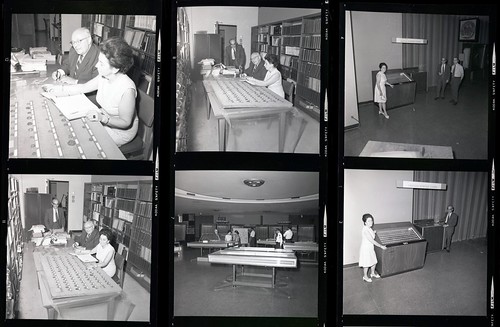 "During WWII, Elvira and Vladmir Clain-Stefanelli had been researching coins in Germany, where they were eventually imprisoned in the Buchenwald concentration camp. After the war, the couple moved to the U.S., and Elvira Clain-Stefanelli became a U.S. citizen in 1956. (71-173-A)" To read the complete tweets (hey, that rhymes!), see:
HARVEY STACK'S NUMISMATIC FAMILY, PART 61The latest article in Harvey Stack's blog series is about the 1973 ANA grading conference. Thanks, Harvey! Important hobby history. -Editor 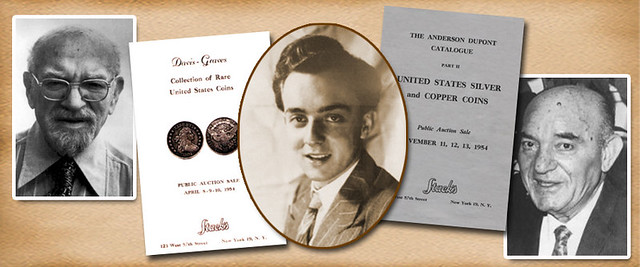 In the spring of 1973, the American Numismatic Association invited a group of over 50 professionals, including myself to their Colorado Springs Headquarters to address the variance that existed among collectors and dealers when grading coins, and to try to unify the system so that all coins could be graded using the same methodology. In the hobby there were many debates about correct grading, what defined Mint State, were coins Proofs or merely prooflike. The standards were different for each denomination and mint; technology differed as did planchet preparation, planchet stock quality, and striking. Addressing the need for a more unified system was the intent of the ANA conference. While there were many different people with many different ideas, members of the conference agreed that it might be worthwhile to consider adopting the Sheldon System. It was almost a quarter of a century old and had been used for coppers (large cents) as discussed and explained in William Sheldon’s book. It was thought that combining adjectival letter grading with numerical grading could make the system clearer. Dick Yeoman, the original editor of the Guide Book of United States Coins and Ken Bressett, who assisted him, re-did the grades as would be listed in the forthcoming issue of the Guide Book, and showed us a copy. It had one flaw which I noticed. Adopting the new names for grades that included letters and numbers worked fine for grades where the letters were the same as the previously used adjectival grading. For example, AU-50 was easily understood, as “About Uncirculated” had been used as a grade in the past. The new system used MS or Mint State for Uncirculated coins. But many coins had previously been called Brilliant Uncirculated (BU). I was concerned that Mint State grades might be questioned by those who were used to the old adjectives. So I suggested to Ken, why not for the first few years list values using both sets of adjectival lettering, and also the numerical grades. It would surely get readers familiar, more quickly than just having just a MS abbreviation with the new numerical grade in the Guide Book. It took me about two weeks of talking with Ken on the phone to convince him that this was important and would be helpful. It took quite a few years, but eventually the numerical part of the grade came to be used more often, as collectors became accustomed to seeing both in print and more commonly used. Within a short time after this conference was held, the ANA established an Authentication and Grading Service that, for a fee, would examine and photograph each coin, attach the photo to a certificate and return it to the sender. However, as the coin was not in any way physically attached to the certificate, there was no way to definitively guarantee that the certificate was for a specific coin. It was nearly a decade after the ANA grading conference, in the early 1980s, that PCGS and NGC came into existence. They provided a service that graded coins and also put them in a sealed plastic holder so that switching was nearly impossible. While there are still problems with grading, the past quarter of a century has seen incredible strides forward in this area. To read the complete article, see:
To read the earlier E-Sylum article, see:
CHARM BRACELET INDIAN HALF MOHUR BRINGS $500KThe Ottawa Citizen reported this week on the sale of a rare Indian half mohur discovered on an old charm bracelet. There's a nice video accompanying the article. -Editor
But Ian Byfield, 34, an assessment specialist for Walker’s auction house, noticed something striking among the two dozen charms: a modified gold coin, with possible deities on one side and Arabic writing on the other. What was this? “I thought we needed to do a little more research.” He was right. On Dec. 11, the coin — now separated from the bracelet — sold in Ottawa for $504,000, one of those Antiques Roadshow moments that left some in the audience gasping. “(The owner’s) reaction afterward was priceless,” said company principal and auctioneer Jeffrey Walker, who was not authorized to identify the buyer or seller. “He couldn’t believe it.” What the long-dead charm collector couldn’t know what that the coin was an Indian “half mohur” minted more than 400 years ago, one of a handful in existence. Byfield said his research was a months-long process. It began in the spring with a look through standard coin catalogues, but no match could be found. He then posted a photo of the nickel-sized item on a coin collector forum. The moderator quickly sent him an alert, saying this coin was something special. Further inquiries determined the coin was minted in 1605 in India, during the Mughal Empire and reign of one Muhammad Akbar, who is famous for attempting to forge a peaceful coexistence between the Islamic faith and Hinduism. Thus, the coin was considered remarkable because it combines Hindu deities — Rama and his wife Sita on one side — with an Arabic inscription on the back that provided the date of fabrication. The coin was sent to the Numismatic Guaranty Corp. of Florida, which established its authenticity, a confirmation that gave it an estimated value of between $150,000 and $250,000. So, in advance of the auction, Walker’s spread the word to the world’s high-end coin-collecting community, which knew that some silver versions of the coin were held by museums. (One was sold within the last 10 years for more than $100,000, which helped establish the auction estimate.) The bidding began at $75,000. Inside Tudor Hall on North Bowesville Road, Byfield was on the telephone with one of two high-end bidders from off-site, while another associate handled a second wealthy collector. Back and forth it went, in $25,000 increments, Byfield and the other agent following instructions to keep raising their paddles. In less than four minutes, Walker had banged the gavel at $420,000, a cost that went to $504,000 with the buyer’s premium. “A new world record,” Walker declared. The hushed room broke into applause. Walker said the seller first contacted his firm about a year ago to dispose of furniture and jewelry that had accumulated through generations of the family’s successive moves from Europe to Canada. The surviving family had taken all the pieces they could handle, but there was still a good deal in storage. The excess furniture was dealt with first, then came the jewelry, each piece carefully examined. He said the current owner did not know how the coin came to be on the bracelet, which appeared to belong to his great-grandmother. The bracelet, by the way — without the coin — sold for the estimated $8,000. It pays to do your numismatic research! -Editor To read the complete article, see:
EDWARD VIII SOVEREIGN SOLD FOR £1MDick Hanscom and Arthur Shippee forwarded this BBC News story about the private sale of an Edward VIII sovereign. Thanks! -Editor
The new owner, a private collector, described the chance to buy it and bring it back from the US as a "once in a lifetime opportunity". The coin is one of a trial set of six which never went into mass production owing to Edward's abdication in December 1936. It only has a face value of £1 but is now the country's most valuable coin. The 22 carat gold sovereign - a type of coin which has not been struck for general circulation since 1932 - is just 22mm in diameter and weighs 7.98g making it just fractionally smaller and lighter than a pound coin. It was prepared for striking in January 1937, but the previous month the King abdicated in order to marry American divorcee Wallis Simpson. Only the trials remained, but they were hidden from public view for decades. Edward, who became the Duke of Windsor, requested a set of coins but was refused by his brother, George VI. Quirk of vanity
What fascinates collectors and historians is not only its rarity, but also that Edward VIII was willing to break with a convention that went back centuries to Charles II. This saw each monarch face the opposite direction to their predecessor. Edward preferred his left profile, partly owing to his hair parting, and insisted on the portrait facing, in effect, the wrong way. 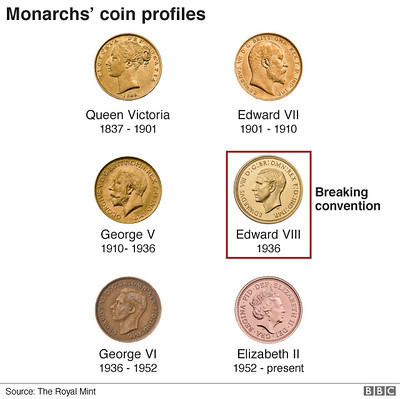 "Edward VIII is quite a vain character. He insisted on facing the same way as his father, because he believed that was his best side," said Chris Barker, from the Royal Mint Museum. George VI, who succeeded him, also showed his left profile, keeping to tradition as if Edward had not broken the sequence. To read the complete article, see:
To read an article from The Guardian, see:
 MODERN PISMO CLAM SHELL MONEYJoel Anderson submitted these notes about modern Pismo Clam Money inspired by the original depression-era scrip discussed last week. Thanks! -Editor
In October 2019 an issue of 20 Pismo Clam Shells, denominated at $20 each, were created by local artist Sarah Chapman Renner, who drew the 2013 issues of Pismo Clam Money. Shells were numbered 101 to 121. Like the original clam shell money, each is hand drawn, hand signed and individually numbered. Each has a different design. The shells are approximately 4.5 inches (11.5cm) wide. Examples of the 2019 Pismo Clam Money can be purchased in person at face value for $20 at Games Exchange in Grover Beach, California, or purchased by mail for $25, which includes shipping to a US address, from Joel Anderson, PO Box 365, Grover Beach, CA 93483, phone 805-489-8045 or ordered on-line at PismoClamMoney.com . Nice! Thanks for sharing the information. Here are images of the sold-out 2013 shells. -Editor 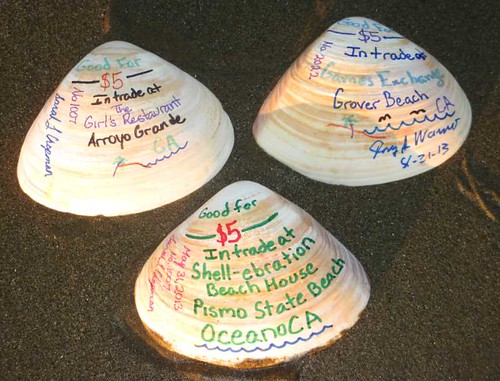 To read the earlier E-Sylum article, see:
2020 ANA SUMMER SEMINAR REGISTRATIONJeff Garrett published a nice article on his NGC blog about this year's American Numismatic Association Summer Seminar. Here's an excerpt. Don't forget to register! -Editor 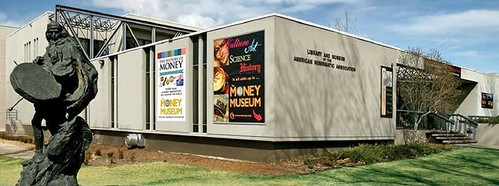
The Library and Museum at ANA headquarters Numismatic education at its finest The ANA Summer Seminar is one of the best programs the ANA conducts. It is numismatic education at its finest. Each year, over half of those in attendance are repeat students. Many of the instructors have been teaching for decades, several of which are NGC employees. The ANA is very grateful to the individuals and companies who donate their time and talent to this amazing program. The Summer Seminar could not happen without them. One of the most wonderful aspects of the Summer Seminar are the Young Numismatist (YN) students who attend each year. Last year, over 50 YN students attended Summer Seminar. Most were able to attend because of full scholarships made available by the ANA and other numismatic organizations. Over 45 years ago (1974), I won a scholarship to attend the ANA Summer Seminar, and I can attest to the fact that the experience can change lives. Over the years, many professional numismatists have gotten their start at the Summer Seminar. Several are now instructors wishing to give back to something that was so meaningful to them. Young collectors are the future of the hobby, and numismatic education is the best way to ensure continued interest. Scholarships also are available for adults of all ages. Camaraderie and immersion in coin collecting The Summer Seminar is an opportunity for numismatic learning and, as mentioned above, camaraderie. Many students stay in the Colorado College dorms and spend time after class getting to know each other. There are also several optional tours to local attractions, evening lectures and other special events. Attending the Summer Seminar is also a great opportunity to visit ANA headquarters, the Edward C. Rochette Money Museum and the Dwight N. Manley Numismatic Library. The library is the largest lending numismatic library in the country and is fantastic to visit in person. The museum features the Harry Bass collection of gold coins that is among the finest in the world. 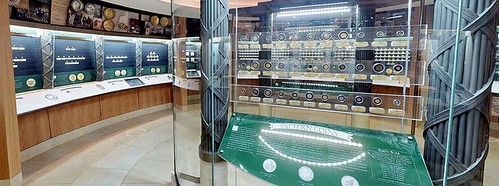
The Harry Bass exhibit at the ANA Museum Most Summer Seminar classes last four days and are intended to provide full numismatic immersion. The grading classes are the most popular and usually sell out well in advance. These classes are quite challenging but offer one the best ways to learn the art of coin grading in a short amount of time. Several students have told me that the hands-on experience of learning to grade is invaluable. The seminars give everyone a chance to examine coins they may never see in their local area. The instructors work closely with every student, making sure they are ready for the next level before moving on. The counterfeit detection classes are also favorites. This subject has become even more relevant in recent years, and students have the opportunity to examine the large reference collection of the ANA. One of the best ways to learn about counterfeits is to examine genuine and fake coins side by side. This, with expert instruction, gives students the best possible education on the subject. The counterfeit detection class is very helpful for coin shop employees looking to sharpen their skills. See you there! It is now time to register for the ANA Summer Seminar and to apply for one of the many scholarships available. Most of the classes fill up early, and everyone is urged to register as soon as the course catalogue is posted. This usually happens early in the year. If you want to learn how to be a successful coin collector, there is no better numismatic education than the Summer Seminar. I look forward to seeing you there! To read the complete article, see:
For more information, or to register, see:
BIBLIOTHèQUE NATIONALE GOLD AUREI MISSINGGeorges Depeyrot passed along this report on three Roman aurei of Postumus in gold mounts missing from the Department of Coins, Medals and Antiques at the Bibliothèque nationale de France in Paris. Thanks. -Editor 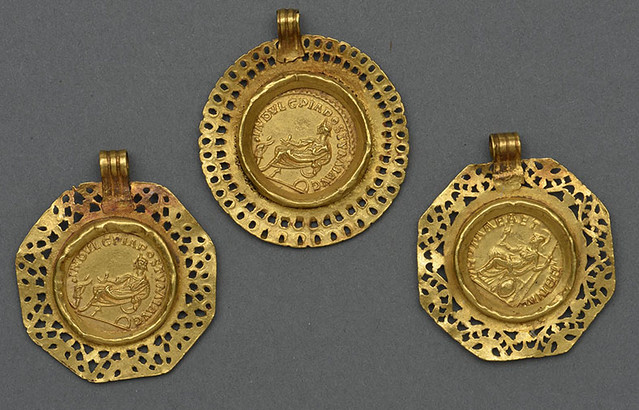 The Bibliothèque nationale de France has reported three missing Roman gold jewels made of aurei of Postumus in gold mounts. They are part of the Rennes hoard and entered the collection of the Paris Coin Cabinet (now Department of Coins, Medals and Antiques at the Bibliothèque nationale de France) in 1774. The French Police are now investigating the case and Interpol has been informed. Please, if you have any information, contact: the Groupe de répression des vols d’objets d’art: +33 6 08 28 75 68 or alternatively the Etat major de la police judiciaire de Paris: +33 1 87 27 66 36. Be on the lookout for these coins with or without their gold mounts. -Editor To read the complete article, see:
16TH CENTURY COIN HOARD FOUND IN ROMANIAFound via The Explorator newsletter is this great coin find in Romania. The image in the article does not seem to picture the coins described, so I haven't included it. -Editor Almost 1,000 coins dating back to the years 1500 – 1600 have been discovered in the locality of Sabiesti, in Dâmbovita county, some 50 km north of Bucharest. The coins are of Spanish, Romanian, Polish and Ottoman origin and have been discovered by amateurs, who were investigating the site legally, with metal detectors, the Dâmbovita County Police Inspectorate announced. The place where the coins have been discovered is not an archaeological site. To read the complete article, see:
 ICONIC CHINESE BANKNOTE WOMAN TRACTOR DRIVERDick Hanscom passed along this BBC News article about the woman pictured driving a tractor on an iconic Chinese banknote. Thanks! Here's an excerpt. See the complete article online for more. -Editor 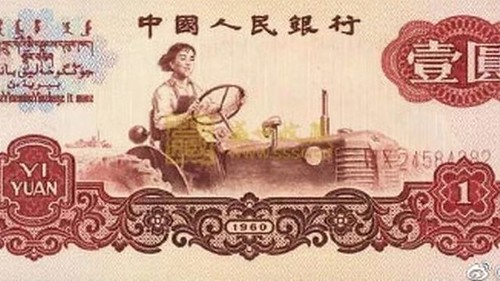 A woman who became China's first female tractor driver, and eventually a national icon, has died at the age of 90. In 1948, Liang Jun became the only female in China to take up the job, when she enrolled in a training class for tractor drivers. More than a decade later, an image of her proudly driving a tractor was featured on China's one-yuan banknote. "No-one could drive as well as me," she had said in an earlier interview. "I have no regrets in this life." Liang Jun was born in 1930 to a poor family in China's remote Heilongjiang province. She spent most of her early years helping out at a farm as well as studying in a rural school. In 1948, when a local school opened up a course to train tractor drivers, she seized her chance. 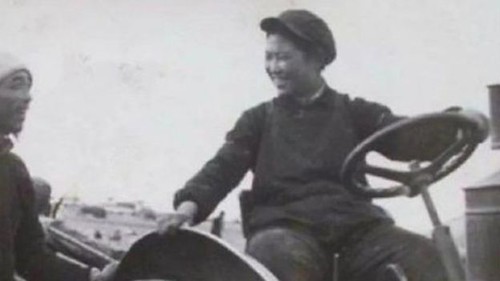 In previous eras in China, nobles, poets and military leaders were the ones to admire. But when the communists took power in 1949, a new kind of hero was born - the model worker, a concept already in use in the Soviet Union. The Chinese state promoted poor, hard-working individuals whose dedication to building a socialist country was held up for others to follow. Liang Jun was one of the first, and one of the best known, model workers. Her smiling face as she drives her tractor on the one yuan banknote was supposed to inspire others to similar heights of achievement. It was not just class barriers she broke down either. Liang Jun became a symbol for all Chinese women, and the possibilities that now opened up for them. She herself made full use of those opportunities. She became an engineer and a politician; a long journey from an impoverished childhood. To read the complete article, see:
BROOKLYN ARTIST STAMPS TUBMAN ON $20 BILLSAnother artist is overstamping $20 bills to promote a Harriet Tubman note. Found via the January 14, 2020 issue of News & Notes from the Society of Paper Money Collectors, here's an excerpt from a Brooklyn Eagle article. -Editor
Cooper estimates that roughly 350 bills with Tubman’s face on it are in circulation around New York, Virginia, Michigan and California. Her brother-in-law gave her $2,000 worth of $20 bills to be stamped. “It’s gotten much bigger than I thought it would,” she said. Cooper said she hopes to set up a booth where people can bring their own bills to be stamped. “I definitely hope that women are emboldened and empowered by a woman’s presence on our U.S. currency — but more than that, women of color,” she said. “Although I’m not a woman of color, I see that in this feminist movement that’s become so commercial … women of color are lost in those messages. Some of the strongest women who have been through the hardest of circumstances are women of color, and they deserve a platform just as much as any woman.” The $20 bill featuring Tubman was slated to be released this year — the 100th anniversary of the 19th amendment, which gave women the right to vote — but was postponed in May by President Trump’s treasury secretary, Steve Mnuchin. The legality surrounding stamping bills is somewhat of a gray area. It is illegal to deface currency, but the Bureau of Engraving and Printing defines that as someone who “cuts, disfigures, perforates, unites or cements together” banknotes “with intent to render such items unfit to be reissued.” It is also illegal to advertise on money. Susan Ades Stone, executive director of Women on 20s, a nonprofit grassroots organization with its own stamp, said that what Cooper did is perfectly legal. The bills will remain in circulation, she said, so long as the two round seals, serial number and any metallic ink are not stamped over. To read the complete article, see:
LOOSE CHANGE: JANUARY 19, 2020Here are some additional items in the media this week that may be of interest. -Editor
Ursula Kampmann of CoinsWeekly published a review of Roman Imperial Coinage II.3: From AD 117 to AD 138 - Hadrian (The Roman Imperial Coinage) by Richard Abdy. -Editor To read the complete article, see:
The Book Toilet
For bibliophiles who have everything, here's an old chamber pot fashioned to look like books. John Lupia passed this along from Facebook. It had earlier been on Atlas Obscura -Editor 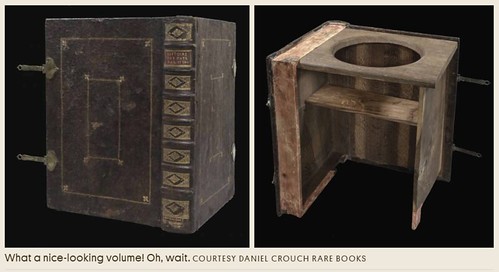 READING MATERIAL AND TOILETS HAVE a special relationship. Stacks of magazines are as common a fixture of many washrooms as toilet paper, toothpaste, or towels. The porcelain-throne-as-reading-nook trope is so famous that Barnes and Noble once created a list of the five best “books to read in the bathroom,” ideal for tackling in “two- to 10-minute increments.” Books had a place in some 18th-century bathrooms, too, but they weren’t always for reading. Occasionally, they were just highbrow camouflage. To read the complete article, see:
Carnegie Library Thieves Plead Guilty
Also in the books-don't-deserve-this-treatment department, the men accused of stealing rare books from the Carnegie Library of Pittsburgh rare book room have pleaded guilty. Thanks to Larry Dziubek for passing along this Pittsburgh Post-Gazette article. Disgusting. There was also coverage in the Washington Post. -Editor
Greg Priore, 63, of Oakland who worked as the sole archivist and manager of the the library’s rare book room, and John Schulman, 56, of Squirrel Hill, who owns Caliban Book Shop, will be sentenced by Allegheny County Common Pleas Judge Alexander P. Bicket on April 17. Advisory sentencing guidelines call for nine to 16 months incarceration in the standard range for a first-degree felony, although probation is recommended in the mitigating range. Mr. Priore, who admitted in statements to police his role in the crime, pleaded guilty to theft and receiving stolen property — both first-degree felonies. Mr. Schulman, who investigators said would receive the stolen items from Mr. Priore and then sell them to collectors through his store and online, pleaded guilty to receiving stolen property, theft by deception and forgery. All the other counts against both men were withdrawn by the prosecution. Suzanne Thinnes, a spokeswoman for the Carnegie Library of Pittsburgh, called the thefts “devastating.” Mr. Priore was the manager of the Oliver Room, which housed 30,000 unique and valuable items, Mr. Catanzarite said. To read the complete articles, see:
To read earlier E-Sylum articles, see:
There's a Lump in this Stupid Ottoman...
In the there's-hope-for-humanity-yet-department is this story of a Michigan man who found a cash windfall in some used furniture. -Editor Howard Kirby got the surprise of his life last month when he found over $43,000 in cash inside a couch he'd purchased at the Habitat for Humanity ReStore in Owosso, Michigan. Kirby purchased the couch to outfit his man cave but said the ottoman felt odd and uncomfortable. His daughter eventually unzipped the cushion to examine it further and discovered stacks of hundred-dollar bills. A total of $43,170 was found inside the couch, but Kirby didn't feel morally right keeping it. He went back to the store to seek out the original owner and tell them about the cash. Kim Fauth-Newberry came into possession of the couch after her grandfather, the original owner, passed away last year. She said she had no idea there was money inside when she gave it away. To read the complete article, see:
ROCKET LAB’S $7.5M MISSION SUCCESS COINThe numismatic community would probably add an asterisk to the listing, but here's another candidate for the most expensive coins in the world list. -Editor 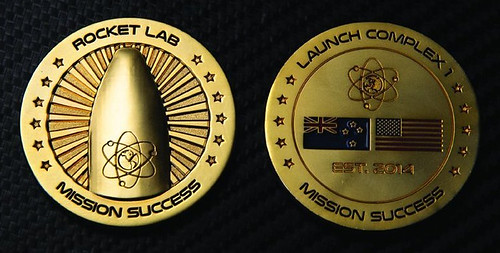 Rocket Lab’s merch store has pretty much what you’d expect from a space-themed gift shop — baby onesies, t-shirts, caps and mission patches. But the commercial rocket launch company just added its latest product, and it’s a bit different from their standard fare: For just $7.5 million, you can own a “Gold Mission Success coin” for a “dedicated mission,” in either LC-1 (Rocket Lab’s New Zealand launch facility) or LC-2 (the company’s new Virginia-based U.S. launch site) flavors. The coin is “triple plated gold,” but its material composition isn’t the reason for the high price. And in fact, there is a way to get one absolutely free — all you have to do is purchase a dedicated launch aboard one of Rocket Labs’ Electron launch vehicles. That makes sense, because the cost for Rocket Lab’s dedicated launch services (when you’re not splitting the cost across a long list of small payloads from multiple customers) appears to be right in that range. If you just want the coin and not the 56-foot, 27,000+ lb rocket, however, Rocket Lab’s latest product is for you. The detailing on the coin’s face and back looks pretty nice, and it’s a relatively large coin as far as coins go, as it looks like it’s probably around double the diameter of a quarter, at least. To read the complete article, see:
|
|
 |
